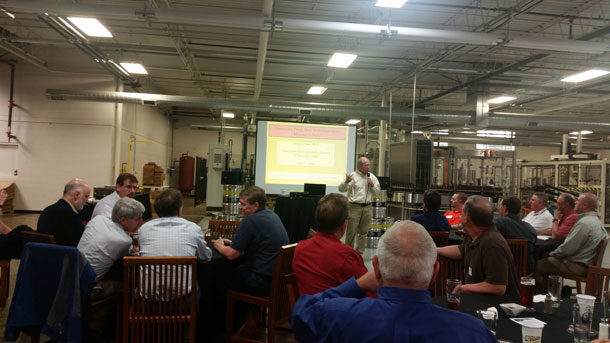MONDAY BEER LINKS, MUSING 5.09.16
The Session #111: Are you there Beer? It’s me, Oliver.
[Via Literature & Libation]
Session 111: You’ve Lost That Lovin’ Feeling.
[Via A Good Beer Blog]
Session #111: A Beer Mid-Life Crisis?
[Via Boak & Bailey’s Beer Blog}
Surviving a Beer Midlife Crisis — The Session #111.
[Via Good Beer Hunting]
The premise behind The Session is, or at least was, that the host recap the various posts, so I generally don’t point to them on Monday. But I’ll break with tradition because although I did not chime on Friday — a) I was in information collecting mode at the Craft Brewers Conference, and b) am more interested in writing about various aspects of beer and brewing than my relationship with beer — it is so interesting to read how those more generous about revealing their motivations think about their relationship with beer. In addition, Michael Kiser calls out what he refers to as “an old guard in craft beer.”
There are 6,000 active TTB licenses in the US right now, according to the BA. That means in the next couple of years, we could see 1-2k more breweries. Instead of applause, that line got a collective groan from an audience of craft brewers. For those people, more breweries means more competition, or noise, depending on how you look at it, that they have to fight through every day to sell their beer. And the assumption seems to be that these new people are either getting in to it for the wrong reasons (money) or they’re young and dumb and they’re going to screw everything up with low quality beer.
That sounds like a form of mid-life crisis to me. And fuck that.
I’ll be borrowing from these and other Session #111 posts when I speak at The Beer Bloggers & Writers Conference in July. Because writers should be as concerned about remaining relevant as companies/brands/brewers are.
Smithsonian Announces New Initiative To Document Brewing History.
This was announced at the Craft Brewers Conference. Brewers who won medals in the World Beer Cup competition might disagree, but it looks like the biggest news of the week to me. [Via Smithsonian]
Will Big Lager one day go the same way as Big Porter?
And a related question from Ron Pattinson: Why do beer styles disappear? [Via Zythophile]
America’s New Beer Test.
“In craft beer, you’re dealing with voters of the whole spectrum, from 21 until they’re cold. Our beer drinkers are left, right, Independent. Beer is the x-factor. People might not agree politically, but they can agree that this beer is great.”
When James Schirmer drew my attention to this via Twitter the headline said: “How Craft Beer Became the Budweiser of America.” That certainly could be taken to mean many different things. [Via Atlantic]
An American beer snob in Munich.
As you will see if you read the replies to Joe Stange’s tweet (“Confused sad American person goes to Munich in search of IPA”) some people didn’t think much of this story. [Via Boston Globe]
FROM TWITTER
Maybe she'd prefer hop flowers today? #MothersDay pic.twitter.com/vAYz0PHToV
— Rogue Ales & Spirits (@RogueAles) May 8, 2016
